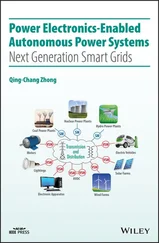From a system dynamic point of view, the bulk generating units, due to their high inertia, provide a long time constant; such that the rotor speed and thus the grid frequency cannot alter suddenly, while the load changes. Hence, the total rotating mass enhances the dynamic stability. In future, a significant share of DGs/RESs/MGs in the electric power grids is expected. This increases the total system generation power, while does not contribute to the system rotational inertia. System dynamics are faster in power systems with low rotational inertia, making control and power system operation more challenging [32].
A complete understanding of reliability considerations via effective modeling/aggregation techniques is vital to identify a variety of ways that power grids can accommodate the large‐scale integration of the distributed micro‐sources in future. An accurate dynamic model is needed for the stability analysis and control synthesis in a grid with a high degree of DGs/RESs penetration. A proper dynamic modeling and aggregation of the DGs/RESs and MGs, for performance and stability studies, is a key issue to understand the dynamic impact of distributed microsources and simulate their functions in new environment.
The power system is a nonlinear multivariable time‐varying system. It is represented by a nonlinear set of equations for the generators (swing equations), for the transmission lines and for the loads, which for a typical power system has a few hundreds of states. For the control design purpose, usually a reduced‐order linearized model around an operating point is used and it is assumed that all system parameters are known and time‐invariant. These assumptions, however, are not valid in a real power system with dominated DGs/RESs/MGs. The main dynamic modes of the system are varying stochastically during a day because of the variation of load and aggregated inertia. The dynamic modes will change more significantly by integration of new RESs into the power system (e.g. because of long‐term variation of the mean value of the aggregated inertia). Therefore, a fixed linearized time‐invariant model will not represent correctly the behavior of the power system.
The frequency response of the system can be identified offline/online using the data for different load and generation configurations (when the share of DGs/RESs is increased) and saved in a database for the models. The small variation of the system (originated from measurement noise, load variation, and system nonlinearity) will be modeled by frequency domain uncertainty. The long‐term effect of change in system inertia can be considered by identifying several frequency‐domain models for different levels of RES penetration. One can represent this model's database by an LPV model [116]. It should be mentioned that the model of the power system for the frequency, voltage, and rotor angle is different because they have different inputs and outputs and scheduling parameters.
1.4.1 Modeling of Frequency, Voltage, and Angle Controls
The participant bulk SGs with different participation factors are the main actuators for the frequency control system. Following a disturbance, the variation of frequency and tie‐line power is applied to the LFC system via the ACE signal. Then, depending on the accessible amount of regulation power, the LFC system will be activated to compensate the power grid frequency and return it to the nominal value. The LFC system can attenuate the frequency and active power changes from tenth of seconds to few minutes. Therefore, the ACE signal may provide the output of system model for frequency control. Considering the frequency response dynamics [32], the candidate scheduling parameters are system inertia, aggregated generating time constant, droop and damping coefficient. The measurement‐based dynamics identification and system modeling will be for adaptive control and online parameters tuning of the LFC system. The increasing size and diversification of demand/power sources magnify the importance of this issue in the modern power grids.
Unlike grid frequency, since the voltage is known as a local variable, a higher number of measured points are required. For proposing the data‐driven models, several concepts like Thevenin equivalent system and oscillation model will be applied and the results will be used for the grid voltage analysis, and then optimal tuning of AVRs. The measurements of voltage, current, and phase deviations of existing nodes are considered as the most important inputs of model. The system output can be the terminal voltage change of the SGs. In order to construct an appropriate LPV model for voltage control, relevant scheduling parameters must be selected. There are several choices for the scheduling parameters (low‐frequency resonance mode, reactive power of the system, Thevenin equivalent impedance/admittance, etc.) that must be compared and discussed using effective analytical and simulation‐based studies. In choosing efficient scheduling parameters, a tradeoff between accuracy and simplicity of the resulting LPV model is needed. The measurements are also used to perform some important graphical tools and curves to evaluate the stress conditions and to analyze the voltage stability criteria. For instance, the data are fitted to the active power–voltage curve (PV curve) of the equivalent system by suitable fitting approaches such as least squares method.
The SGs equipped with a PSS and RESs participating in power oscillation damping are considered as the main actuators of the control system. It is assumed that some of the RESs are not operating at their maximum generated power, so that they can help for power oscillation damping by reducing/increasing a small percentage of their power generation. The system to be controlled is a multivariable system, where the inputs are the reference voltages for the AVR of the SGs as well as the auxiliary signals that will be added to the reference active and reactive powers of RESs. The system outputs can be the active power or the speed (or both, depending on the type of PSSs) of the SGs and the measured active and reactive powers of the RESs. In order to construct an appropriate model for power oscillation damping, we need to choose the scheduling parameters.
1.4.2 Parameters Estimation
For estimation of all required parameters, the recorded data from the installed PMUs can be used. As shown in Figure 1.2, firstly, a de‐noising methodology, mostly based on rolling averaging windows, can be employed to prepare the received PMU data for further processing. Afterwards, some data‐driven‐based algorithms are used to estimate the most important parameters (e.g., system inertia, droop characteristic, and damping factor) required for building low order power system models such as frequency response model [32] and oscillation model [3]. In real‐time operation, an accurate and fast estimation of parameters is required. The estimated parameters can be used in the auto‐tuning algorithm of the controllers.
In a modern power system, in addition to scheduling parameters, several algorithms need to be developed for online estimating of other important system parameters such as synchronizing coefficient between various areas, rate of change of frequency/voltage (ROCOF/ROCOV), frequency/voltage nadir, and time occurrence of frequency/voltage nadir. The estimations must be fast enough and should cover the issues related to the existing time delay. These data‐driven‐based estimation algorithms can be analytically developed based on the concept of swing equation, base‐case systems, regression, and curve fitting. These measurement‐based dynamics identification and system modeling can be used for adaptive online parameters tuning of the targeted controllers. The increasing size and diversification of demand/power sources magnify the importance of this issue in the modern power grids. The estimation approaches may be applicable for both on‐line and off‐line methods. However, for on‐line applications, shorter data windows must be used.
Читать дальше












